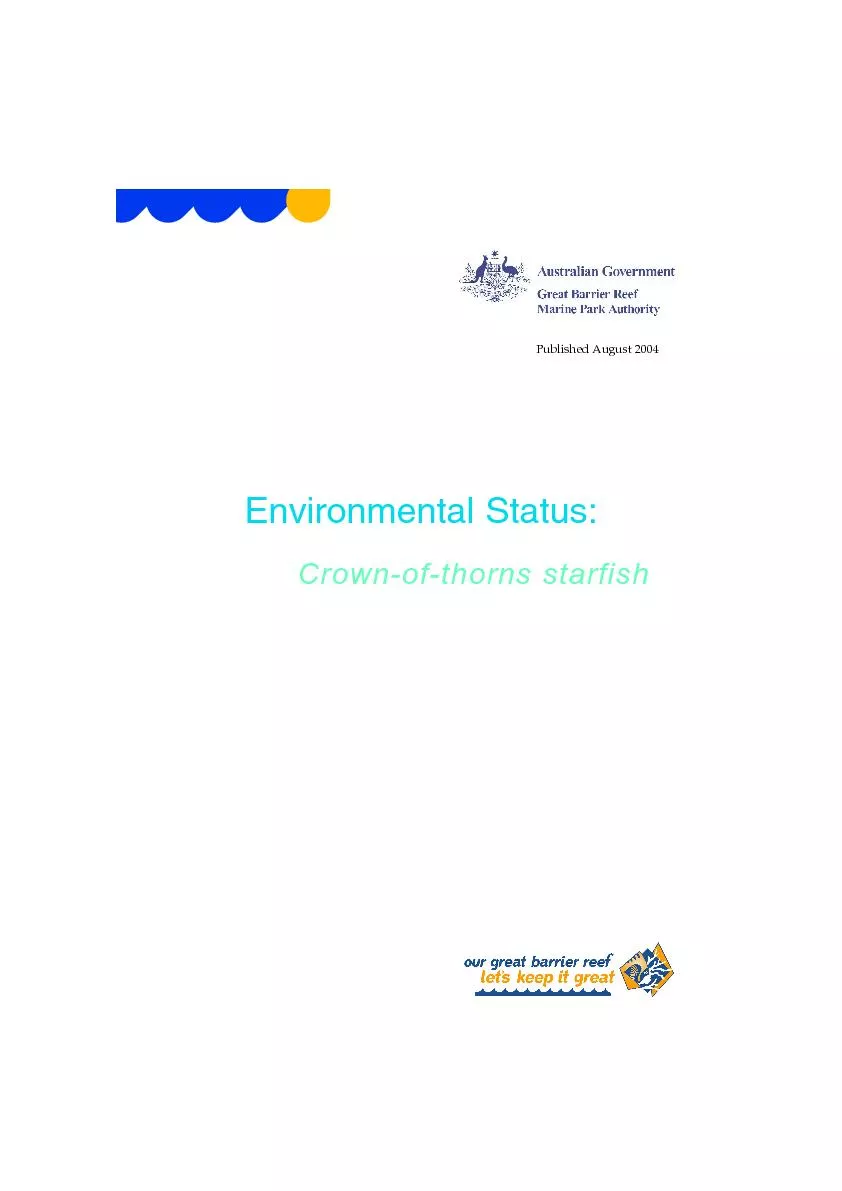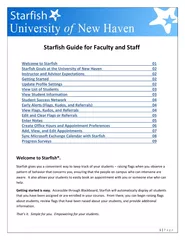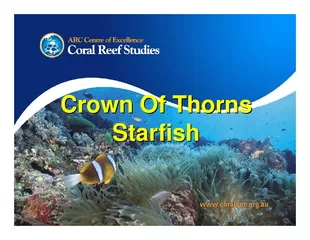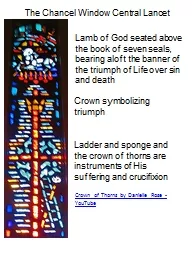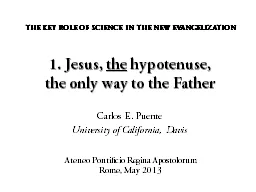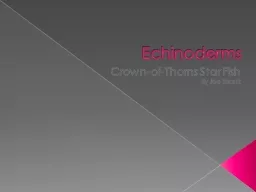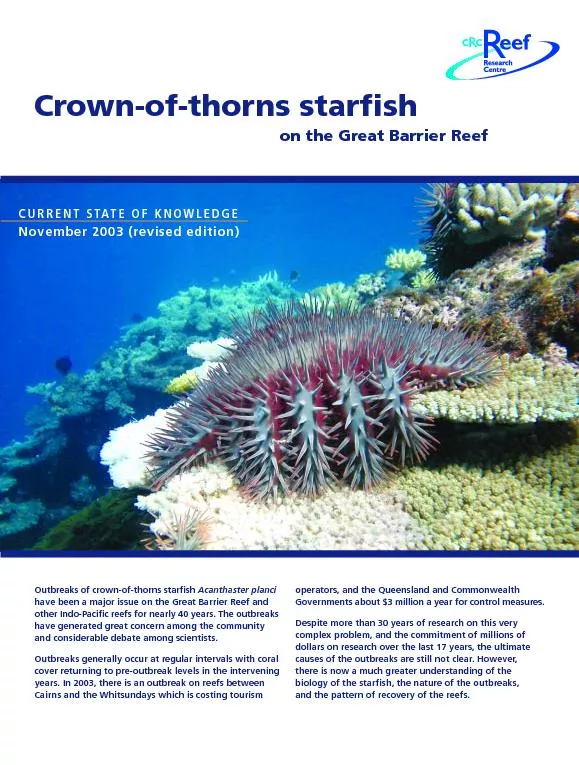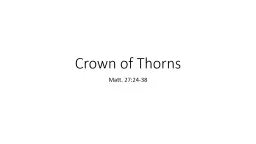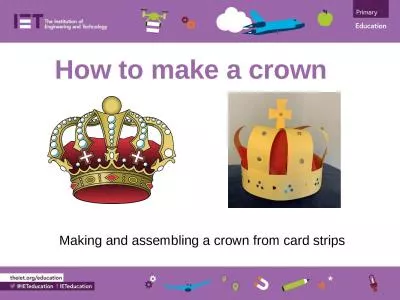PDF-crown-of-thorns starfish
Author : tawny-fly | Published Date : 2016-08-13
Condition The is one of only a few animals that feed on living coral tissue The starfish is named for the dense covering of long sharp spines on its upper surface
Presentation Embed Code
Download Presentation
Download Presentation The PPT/PDF document "crown-of-thorns starfish" is the property of its rightful owner. Permission is granted to download and print the materials on this website for personal, non-commercial use only, and to display it on your personal computer provided you do not modify the materials and that you retain all copyright notices contained in the materials. By downloading content from our website, you accept the terms of this agreement.
crown-of-thorns starfish: Transcript
Download Rules Of Document
"crown-of-thorns starfish"The content belongs to its owner. You may download and print it for personal use, without modification, and keep all copyright notices. By downloading, you agree to these terms.
Related Documents

